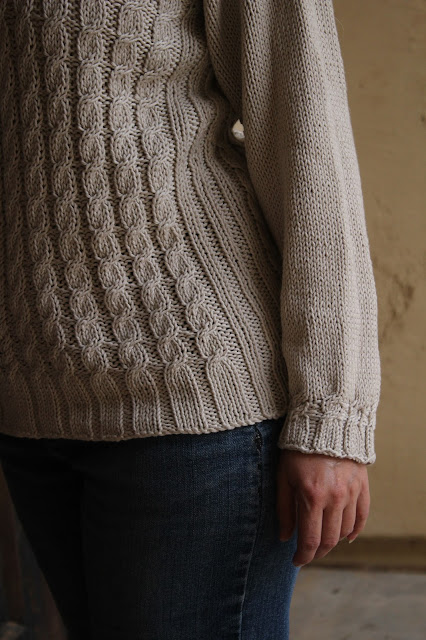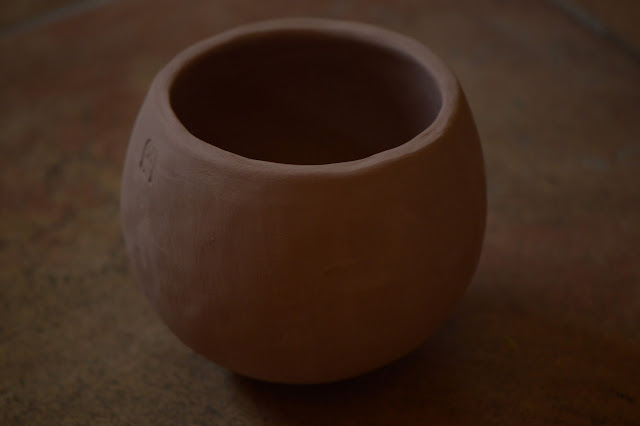Technical Notes:
The sweater was worked in Berroco Modern Cotton, a worsted weight pima cotton/rayon blend. This yarn gave fairly sharp definition to the pattern stitches.
The design was developed with the idea of creating a layered effect: the cabled section opens to a honeycomb stitch yoke, which is then edged by the ribbed collar. Sleeves are worked in plain stocking stitch to allow emphasis to remain with the body of the sweater.
Construction details include a satisfactory experiment in working the sleeves directly by casting on at the armhole. There is a little shaping at armhole and shoulder (this latter done with short rows on the sleeve), but I doubt I would bother with this detail again; I think as good an effect would have been achieved without.
The piece was knit entirely in the round for convenience, though the pattern would not require this. I used knitted steeks at armholes and neck. Again, this was for convenience (dubiously, as I hate stitching steeks down!); the pattern could also have been worked flat.
Each side, front and back, consists of two panels of cables, meeting at a central, chained cable. In the front, this central cable is twisted and then parted to create the yoke. Along the edge of the yoke, the divided cable sections continue to be twisted outward.
In back the cables blend into the yoke that runs straight across, which then blends seamlessly into the collar.
The outer cables are carried to the shoulder and worked to form an accent at the armhole.
At the sides a series of ribbing keeps the texture from being too bulky.
One of my favorite discoveries on this project was a way to handle the cuff. At first I tried a normal ribbed cuff in which the number of stitches was reduced in order to draw the sleeve in at the wrist. I didn't think this looked good with the rest of the design so I ripped it out and tried a new idea. I cabled around (two twists) at the beginning of the ribbed section. This drew the sleeve in naturally with no need for stitch reduction and made a more elegant finish. If the ribbed section were longer, the cuff would flare back out, which might also be a fun way to work a sleeve design. But in this case I kept it fairly short.
The ribbing at the hem is simply the rib pattern used for the cables -- not yet cabled and worked on smaller size needles.
Happy Autumn!
A big thank you to my sister Sarah Myers for the photography!
All images in this post are copyright (C) Sarah Myers. Used by permission.
















